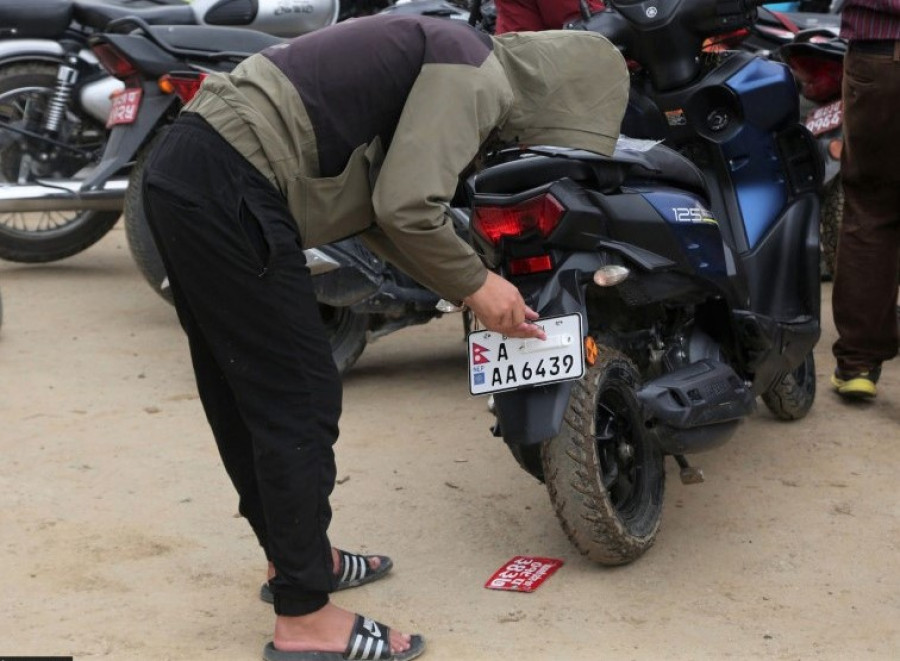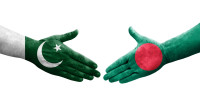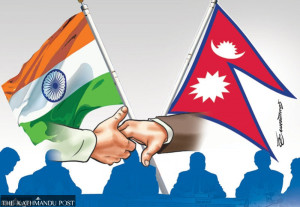Columns
Nepali language chauvinism
Language nationalism for the sake of it is nothing more than language chauvinism.
Deepak Thapa
There are many in the West who continue to foreswear anything produced by Nestlé, the multinational Swiss company. This is not due to any prejudice against the Swiss, but because of the food giant having actively promoted the use of powdered formula for infants to the detriment of breastfeeding, the source of nutrition commonly accepted to be the best for babies. While certainly not part of the boycott-Nestlé brigade, I have my own story about the company and baby formula.
It was some years ago that one of Nestlé’s most recognisable brands, Lactogen, disappeared from the shelves of Kathmandu’s stores. As parents of a little girl who was subsisting partly on milk supplements, we found ourselves at our wits’ end. There were indeed other substitutes in the market, but who was going to trust those over the tried and tested Lactogen? Mad at the company for having hooked us to its product only to suddenly stop supplying them, I fired off an email to their complaints department at their HQ in Switzerland. Having vented my frustration, I thought that was it. Until a few months later, I got a call from someone who asked me ruefully why I had filed the complaint. He said that he represented the local dealer for Nestlé, and the reason Lactogen was no longer available was because of the World Health Organisation’s guidelines coming into effect soon (or already had) that all user instructions have to be printed in the local language as well.
Good for them, I thought. Not many people would have noticed the switch from English+Hindi (as was naturally the case with something produced in India) to English+Nepali that happened some time later on Lactogen packets and many other such items. One can be quite sure though that it has made a world of difference to those who relied only on Nepali to get through life.
The number plate imbroglio
Now, compare that little anecdote about the Nepali language with the never-ending saga of the vehicle registration plates. Nearly a decade ago the government decided to do away with the hand-painted ones in favour of “embossed number plates”. The rationale for such a move was clear, but as my fellow columnist Sujeev Shakya put it categorically earlier this week, in many such cases the driver is something else and the procurement process designed to favour one group or the other. Hence, the contract was awarded to a company that had been blacklisted by the World Bank for fraud. With such an antecedent, it was only to be expected that quality would be compromised, and sure enough, complaints have been aplenty.
Actually, shoddiness of construction has been the least of the problems. Installation of the number plates began in the capital region in 2017. The process plunged into controversy immediately for using the name of the defunct zone, Bagmati. It was then decided to use “State 3” instead since the body to provide a name to the provinces, the provincial assemblies, had yet to be elected. That was equally controversial since it would mean that once the provinces’ names had been agreed on, the plates would have to undergo modifications at a cost to be borne by someone; who it was to be was not clarified.
The greater objection throughout came from a group of busybodies who were against the use of the Roman script instead of the official Devanagari. The stated argument was that not all Nepalis have the facility of reading the Latin alphabet, and hence when incidents take place on the road, people would not be able to identify the vehicle concerned. Fair enough, although give the exponential rise in literacy and numeracy, there are few who would not be able to spell out their A, B, Cs and 1, 2, 3s if they can already read ka, kha, ga and ek, dui, teen. The main problem was that the pro-Devanagari activism was imbued with a heavy dose of a unnecessary nationalism that decried the use of a foreign language in an undertaking of the government’s.
A case was filed at the Supreme Court, and a stay order initially granted before the case was finally dismissed. Enter then-prime minister KP Sharma Oli with his own nationalist credentials to preserve. At his express order, the distribution process was once again placed in abeyance before he was convinced otherwise that the technicalities involved in electronic tracking would not allow for the change to Devanagari. A new transport minister took up the issue, and it now appears that a final decision has been made, hopefully, once and for all, that the Roman script will stay.
Belittling Nepali
It was at the 2003 conference entitled “The Agenda of Transformation: Inclusion in Nepali Democracy” that linguist-historian Rhoderick Chalmers brandished some empty packets of the ubiquitous “chow-chow” to read out what was printed on them. As he pointed out, each had (and still does) the name of the brand prominently in both English and Nepali. But little else was in Nepali. Chalmers argued that there are two classes of citizens that the producers cater to: The first were those who could read English and hence were provided with all the information regarding ingredients and nutritional values, and the others were those who could only read Nepali and deserved knowing nothing more than what kind of noodles it is and how to prepare what is universally decried as junk food. The point he was making remains valid—inclusion has very many aspects to it, and while linguistic inclusion of those comfortable only with Nepali may seem out of place given the discourse ongoing over the past two decades, it is still true.
I doubt if the proponents of Devanagari-on-number-plates really care about such matters. Otherwise, they would be out in force picketing the chow-chow factories to ensure the use of Nepali with equal prominence on the packets. As they would the police offices, demanding that the name badges of the police personnel be in Nepali. For a government agency that is perhaps the most widespread of all and is the first line of contact with the state for many Nepalis, it beggars reason why cops should display their names in English. Such a group should be equally protesting against organisations that raise hoardings with public service messages in English all over the country. Such a list can go on.
Perhaps most insidious is the labelling of drugs. A 2017 study looked at how over-the-counter medicines had complied with the government directive that some of the crucial information be provided in Nepali as well. Of the 759 medicines from Nepali manufacturers, “[m]ost…(84.1 percent) mentioned only the necessary precautions in [the] Nepali language, but [the] majority of them were found without a batch number (84.1 percent), date of production (83 percent), date of expiry (84.1 percent) and price (76.1 percent) in [the] Nepali language”. I have not heard of anyone decrying this egregious omission or taking drug companies to court for endangering the lives of people through potential misdosings or worse.
Language nationalism for the sake of it is nothing more than language chauvinism. The less there is of it, the better off we are.




 11.12°C Kathmandu
11.12°C Kathmandu















